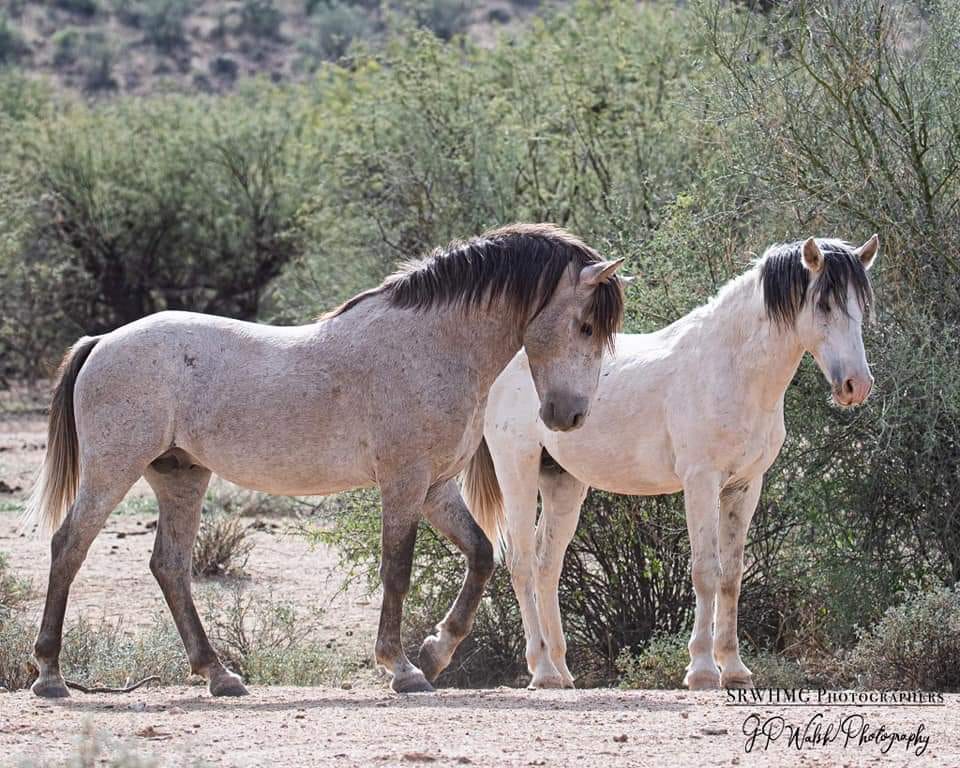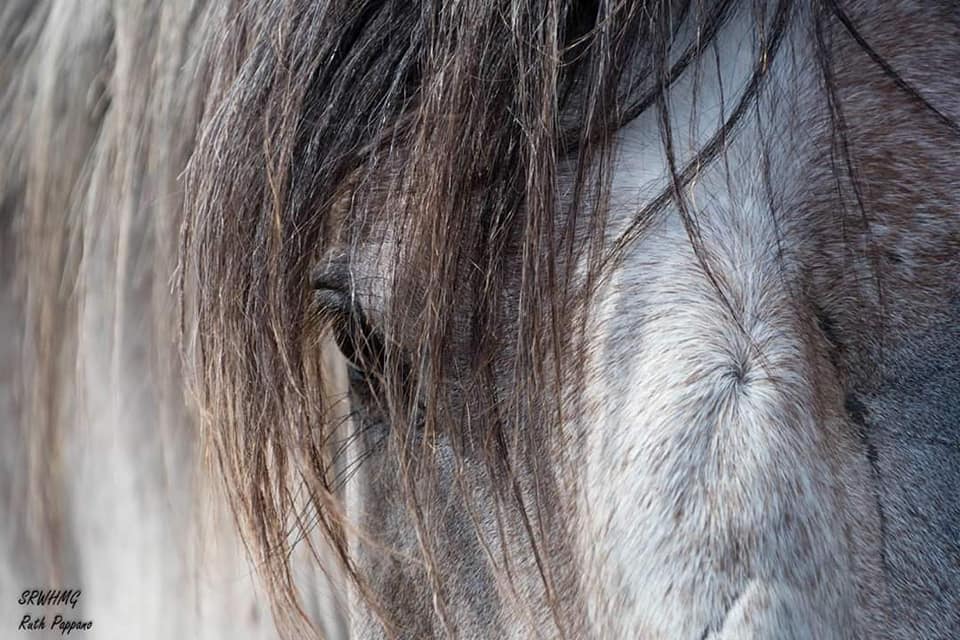
In Memory of Lancelot
We very much regret to have to tell you awful news. This afternoon, we found the much loved, gorgeous lead stallion Lancelot, deceased.
We are absolutely distressed and have no idea what could have happened to him. He was a healthy, young and powerful lead stallion; they usually don’t just turn up dead.
We saw him last healthy and well, with his band 10 days ago, but we saw his band without him just the other day, which is suspicious. For this reason, we sent our volunteers out to search everywhere. Sadly our worst fears came true. His carcass appeared to be between 3 and 5 days old.
SRWHMG, as well as AZDA, are investigating, to try and establish a cause of death. While we did not see any bullet wounds or signs of foul play we want to absolutely rule that out.
We have confirmed that all of his band members are alive and well and still together and they are with a new lead stallion.
Regardless of how many stallions live wild and free on the lower Salt River, there are only a select few with that very magical quality, that everyone seems to recognize. There will simply never be another Lancelot. Rest in peace, brave friend.
SRWHMG.
—-
[update: January 21st]
We want to thank you all for your support and compassionate comments on Lancelot’s death. We cannot possible say thank you under 800 comments, but we really appreciate the outpouring of support. We think it is a huge statement of how much the Salt River wild horses mean to thousands of people locally as well as worldwide. It is the very reason why they are still here, and what gives us a bit of power when we negotiate on behalf of the public, for the best interest of these horses.
We want to give you a few more details on his sudden death and tell you a bit about his relative in this picture.
Lancelot was only 8 years old. That’s basically prime age for a wild horse and he was in perfect health condition. We cannot say that we have a definite cause of death, but we have at least ruled some things out. While his insides had already been scavenged by coyotes already, from what was left of him this is what we could tell:
- There are no bullet wounds and no bullets found in the area.
- He was safely behind the fence and did not have any broken bones and no broken legs or broken neck.
- There were not great big mowing circles by his feet, that we would see if a horse died slowly and in agony
- no signs of scratches on his neck or chest or face or any other mountain lion evidence.
- no signs of a kick to his face, his face was perfectly intact.
- there was mud on his feet from the river and there is no fence yet, so he did not dehydrate.
- he did not have strangles (no lesions)
- no signs of great struggle with another stallion.
So what is left is that he possibly ate something toxic, or choked on something or he even could have had a heart attack. There are many mustard weeds growing right now which are toxic for horses in large quantities. We are monitoring one other lead stallion in the herd for colic symptoms. However, the rest of his band would have eaten just as many weeds and they appear to be fine. So most likely we may just never really know.
While we still cannot believe that this icon is gone, we are grateful that he lived his entire life wild and free. He never had to run from a helicopter and he was never separated from his family and stuffed in a holding pen. This sad fate befalls far too many beautiful lead stallions around the USA, taken from the wild by the BLM (Bureau of Land Management). Those stallions are just as caring, just as sweet as Lancelot was, so it breaks our hearts. We are lucky that Lancelot got to live and die exactly where he belonged.

